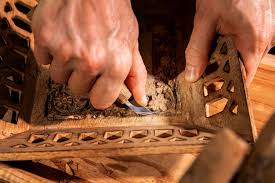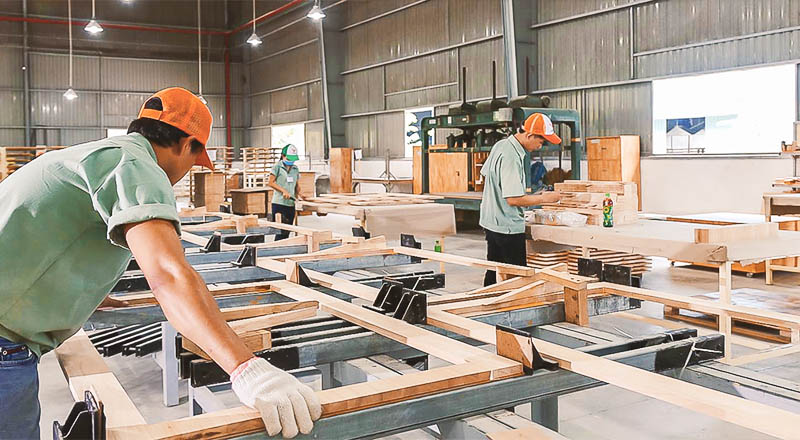
Jepara is famous for its high-quality wood furniture, particularly its intricate carvings and craftsmanship. The furniture industry has become a significant economic driver for the region, benefiting both the local community and the wider economy. However, this industry also presents challenges, particularly concerning environmental sustainability and social issues. This article examines the positive impacts of the furniture industry on the local community in Jepara.
1. Job Creation and Economic Growth

The furniture industry in Jepara is a major source of employment, providing jobs for thousands of local residents. Skilled artisans, carpenters, and laborers are involved in various stages of production, from woodworking and carving to finishing and distribution. Many of these workers have inherited their craft through generations, ensuring that traditional skills are passed down.
In addition to direct employment, the furniture industry also supports related sectors, such as raw material suppliers, transportation, and retail businesses. With an increasing demand for Jepara furniture both domestically and internationally, the local economy benefits from higher wages and new business opportunities, improving the overall standard of living for many families.
2. Cultural Preservation and Identity

The furniture industry plays a vital role in preserving and promoting Jepara’s cultural heritage. Known for its traditional wood carving, Jepara furniture reflects the region’s artistic identity. Craftsmen continue to use age-old techniques, maintaining a strong connection to the past while keeping the town’s artistic traditions alive.
As Jepara furniture gains international recognition, it brings attention to the town’s rich cultural history. Exporting these handmade pieces to global markets allows local artisans to showcase their craftsmanship, contributing to cultural preservation. Moreover, younger generations are increasingly involved in the industry, learning traditional techniques while integrating modern designs, which helps ensure the continuity of both heritage and innovation.
3. Environmental Challenges

Despite its economic benefits, the furniture industry in Jepara also presents significant environmental challenges. The high demand for wood, particularly teak, has raised concerns about deforestation and unsustainable logging practices. Without proper management, this can lead to environmental degradation, loss of biodiversity, and soil erosion.
In response, some furniture producers in Jepara are shifting towards sustainable practices. They source wood from certified sustainable forests and participate in reforestation programs to ensure the availability of raw materials for future generations. Additionally, more manufacturers are adopting eco-friendly production methods, such as using water-based finishes instead of toxic chemicals, to reduce the industry’s environmental footprint.
However, continued efforts are needed to ensure that the industry’s growth does not come at the expense of the environment. Collaboration between the government, businesses, and local communities is essential to promote sustainable forestry and responsible production practices.
4. Social and Community Impact
The furniture industry has had a significant social impact on Jepara. With the creation of jobs and increased wages, many local families have experienced improved living standards. Increased access to education, healthcare, and other services has helped raise the overall quality of life in the region.
However, there are challenges related to working conditions in the industry. Some workers face long hours, low wages, and poor working environments, especially in manual labor roles like sanding, carving, and finishing. The pressure to meet high production targets can lead to exploitation and health risks for workers.
To address these issues, it is crucial for businesses and local authorities to implement fair labor practices, ensure proper working conditions, and protect workers’ rights. Providing adequate wages and maintaining safe, supportive environments for workers will contribute to the long-term sustainability of the industry.
5. Global Recognition and Market Expansion

Jepara furniture has gained international acclaim, with products being exported to markets in Europe, the United States, and other parts of Asia. This global demand has opened up new opportunities for local artisans and businesses, allowing them to reach a wider customer base and increase their earnings. The growing popularity of Jepara furniture in the global market has elevated the town’s reputation as a center for high-quality, handcrafted furniture.
With this international exposure, Jepara’s furniture industry is also embracing innovation. Local craftsmen are blending traditional techniques with modern designs to create unique, high-quality products that appeal to diverse markets. This expansion into global markets presents opportunities for continued growth and higher wages for local artisans.
Conclusion
The furniture industry in Jepara has had a profound impact on the local community, driving economic growth, preserving cultural heritage, and providing job opportunities. However, challenges such as environmental sustainability and social issues must be addressed to ensure the long-term success of the industry. By adopting sustainable practices and improving working conditions, Jepara’s furniture industry can continue to thrive while benefiting the community and protecting the environment.


